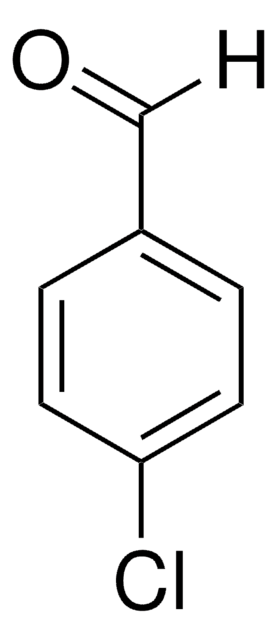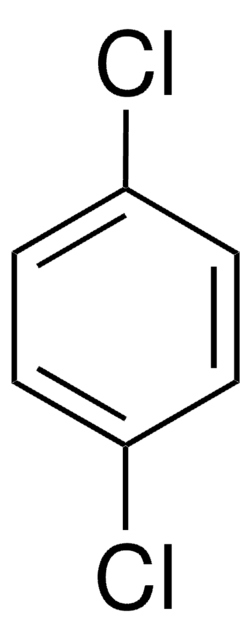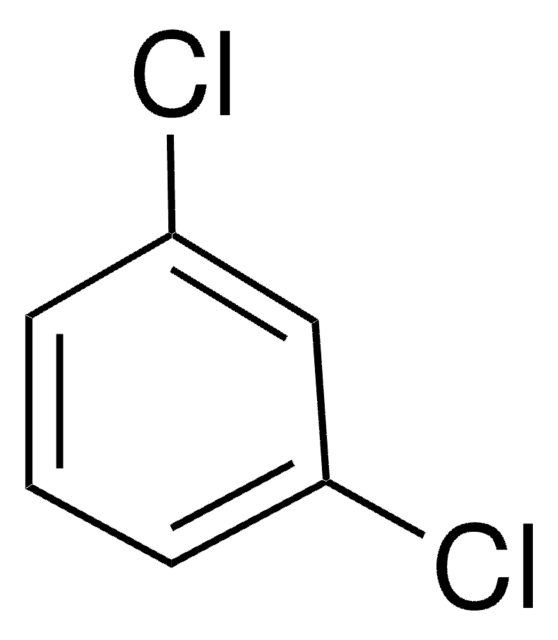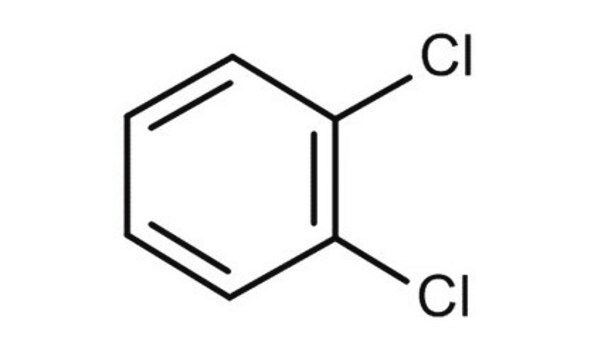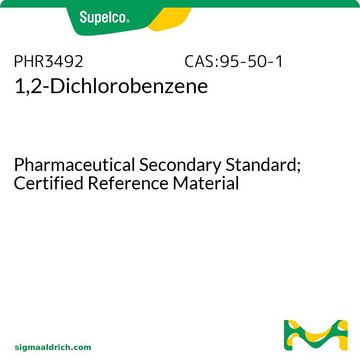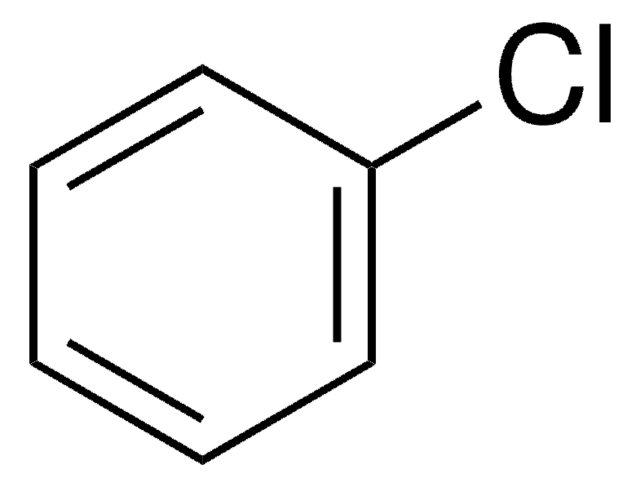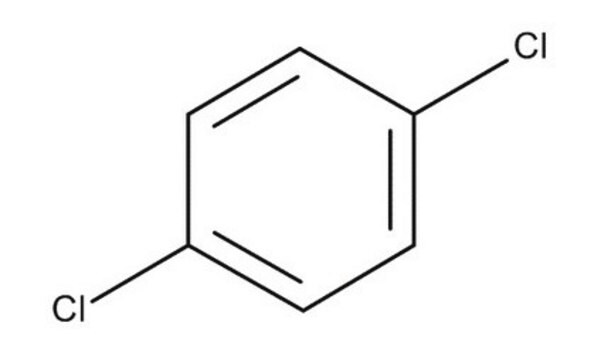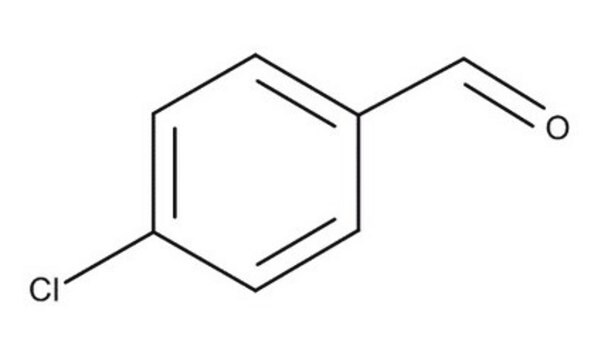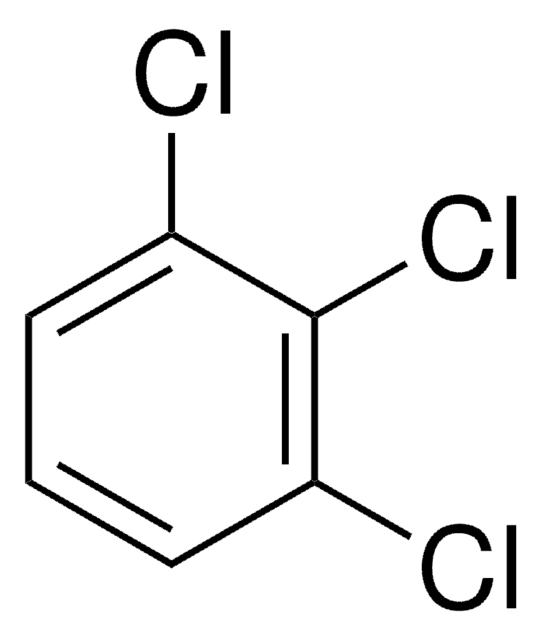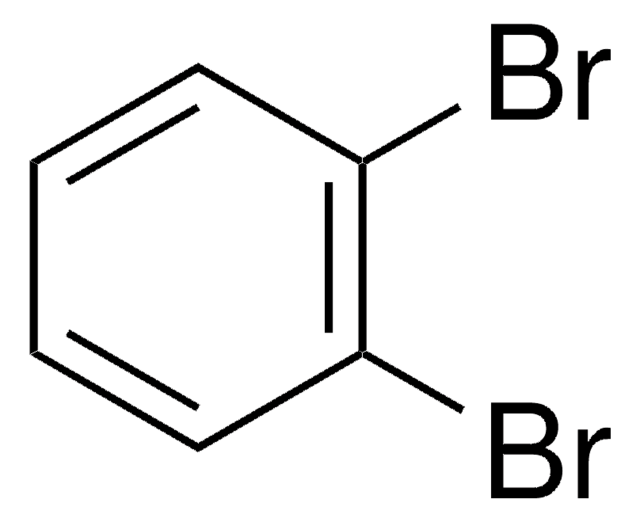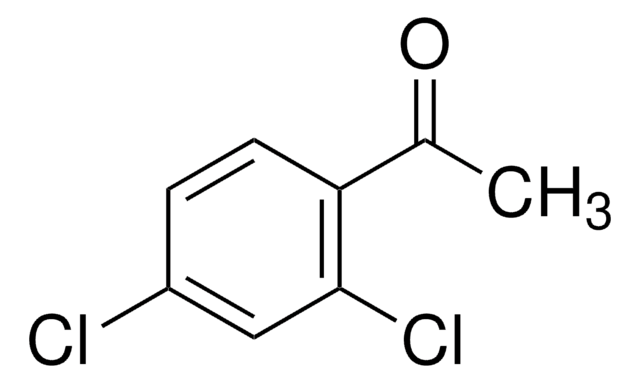Kluczowe dokumenty
113808
1,3-Dichlorobenzene
98%
Synonim(y):
m-dichlorobenzen
About This Item
Polecane produkty
ciśnienie pary
5 mmHg ( 38.8 °C)
Próba
98%
Formularz
liquid
współczynnik refrakcji
n20/D 1.546 (lit.)
bp
172-173 °C (lit.)
mp
−25-−22 °C (lit.)
rozpuszczalność
H2O: soluble 1.23 mg/L
alcohol: soluble
diethyl ether: soluble
gęstość
1.288 g/mL at 25 °C (lit.)
grupa funkcyjna
chloro
ciąg SMILES
Clc1cccc(Cl)c1
InChI
1S/C6H4Cl2/c7-5-2-1-3-6(8)4-5/h1-4H
Klucz InChI
ZPQOPVIELGIULI-UHFFFAOYSA-N
Szukasz podobnych produktów? Odwiedź Przewodnik dotyczący porównywania produktów
Powiązane kategorie
Zastosowanie
Hasło ostrzegawcze
Warning
Zwroty wskazujące rodzaj zagrożenia
Zwroty wskazujące środki ostrożności
Klasyfikacja zagrożeń
Acute Tox. 4 Oral - Aquatic Chronic 2
Kod klasy składowania
10 - Combustible liquids
Klasa zagrożenia wodnego (WGK)
WGK 2
Temperatura zapłonu (°F)
152.6 °F - closed cup
Temperatura zapłonu (°C)
67.0 °C - closed cup
Środki ochrony indywidualnej
Eyeshields, Faceshields, Gloves, type ABEK (EN14387) respirator filter
Wybierz jedną z najnowszych wersji:
Masz już ten produkt?
Dokumenty związane z niedawno zakupionymi produktami zostały zamieszczone w Bibliotece dokumentów.
Klienci oglądali również te produkty
Protokoły
US EPA Method TO-17: GC Analysis of Volatiles on VOCOL® after Collection/Desorption using Air Toxics Tube
Nasz zespół naukowców ma doświadczenie we wszystkich obszarach badań, w tym w naukach przyrodniczych, materiałoznawstwie, syntezie chemicznej, chromatografii, analityce i wielu innych dziedzinach.
Skontaktuj się z zespołem ds. pomocy technicznej